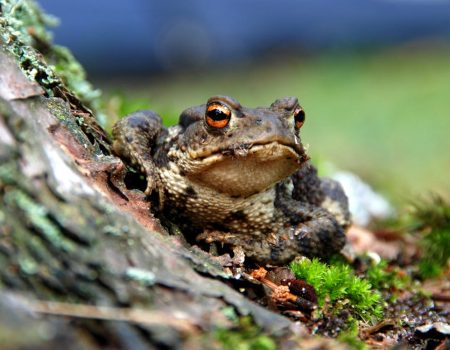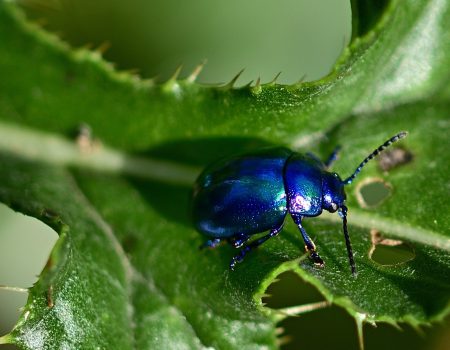You’ve noticed your axolotl acting a little “off.” Maybe they’re not eating, floating oddly, or their vibrant colors look dull. It’s easy to worry, but don’t panic.
Caring for a sick axolotl is all about patience, observation, and creating the right environment. With some knowledge and a little effort, you can help your aquatic buddy feel better and thrive again.
Let’s talk about the steps you can take to give your axolotl the best chance at recovery.
Identifying Signs of a Sick Axolotl

It’s crucial to spot the signs of illness early. Axolotls are delicate creatures, and catching issues before they escalate can make all the difference.
Axolotls reach sexual maturity at about 6 months of age.
Common Symptoms of Illness
Axolotls show clear signs when something’s wrong. Look for:
- Loss of appetite: Refusing food for several days.
- Floating or sinking: Struggling to stay at the bottom or floating uncontrollably.
- Skin changes: Pale, patchy, or discolored skin.
- Lethargy: Unusual inactivity or staying in one spot for long periods.
- Gills shrinking or curling: Indicates stress or poor water quality.
Pay attention to behavioral changes—if your axolotl isn’t acting like themselves, it’s a signal to investigate.
Differentiating Between Stress and Illness
Not every odd behavior means your axolotl is sick. Stress can cause temporary changes, like floating or reduced appetite. Check their environment first—issues like poor water conditions or sudden temperature changes can stress them out. Address these quickly, as prolonged stress can lead to illness.
Setting Up a Recovery Environment
Creating the right environment is the first step in helping your axolotl recover. Sick axolotls need a calm, clean space to heal.
Axolotl eggs hatch approximately 2 weeks after being laid.
Isolating Your Axolotl
If you have multiple axolotls, move the sick one to a quarantine tank. This reduces stress and prevents spreading of illness. A simple 10-gallon tank with basic essentials works well.
- Use dechlorinated water. Keep the parameters stable.
- Add hiding spots like PVC pipes or smooth rocks to help them feel secure.
- Maintain a gentle filter to ensure good water flow without strong currents.
Checking Water Quality
Water quality is one of the most critical factors in axolotl health. Test the following regularly:
- Ammonia and nitrites: These should always be at 0 ppm.
- Nitrates: Keep under 20 ppm.
- Temperature: Ideal range is 60–64°F (16–18°C).
- pH level: Stick to a neutral range of 6.5–7.5.
Invest in a reliable test kit and check parameters daily while your axolotl is recovering. Clean water helps prevent infections and reduces stress.
A female axolotl can lay between 300 and over 1,000 eggs per spawning.
Adjusting Lighting and Activity Levels
Keep the tank in a low-traffic area with minimal lighting. Axolotls are sensitive to light and can get stressed by too much activity around their tank. A calm environment supports recovery.
Treating Common Axolotl Illnesses
Axolotls can face various health issues, from infections to injuries. Let’s break down some common problems and how to address them.
Dealing with Fungal Infections
White, cotton-like patches on their skin or gills usually mean a fungal infection. This is common in poor water conditions or after an injury.
- Salt baths: Prepare a separate container with 2–3 teaspoons of aquarium salt per liter of water. Let your axolotl soak for 10–15 minutes once a day.
- Clean water: Keep the main tank pristine to prevent reinfection.
Never overdo salt baths, as they can stress your axolotl. Stick to daily treatments until the fungus clears.
Treating Bacterial Infections
Red sores, ulcers, or inflamed skin could indicate a bacterial infection. These are often caused by injuries or poor tank hygiene.
- Antibiotics: Use veterinarian-prescribed antibiotics like neomycin or kanamycin. Avoid over-the-counter medications unless directed by a professional.
- Keep the tank clean and monitor water quality closely.
Addressing Floating Issues
Floating can result from constipation, gulping air, or water quality problems. Start by checking the basics:
- Reduce food portions. Overfeeding can lead to digestive issues.
- Offer blanched peas (shell removed) to help with digestion.
- Adjust water temperature—cooler water helps with bloating.
If floating persists, consult a vet to rule out organ issues or infections.
Healing Physical Injuries
Axolotls sometimes injure themselves on sharp objects or during tankmate scuffles. Keep the tank clean to prevent infections and remove any sharp decor. Axolotls have amazing regenerative abilities, so minor injuries often heal on their own.
For severe wounds:
- Use stress coat additives to promote healing.
- Quarantine the axolotl to reduce movement and stress.
Helping with Gill Shrinkage
Shrinking or curled gills usually point to poor water conditions or high stress. Fixing this requires:
- Improved water quality. Do regular water changes.
- Lowering the tank’s temperature if it’s too warm.
Gill damage takes time to reverse, so be patient while your axolotl recovers.
Feeding a Sick Axolotl
When your axolotl is sick, their appetite often decreases. Providing the right food can encourage them to eat and support their recovery.
Offering Easy-to-Digest Foods
Stick to soft, protein-rich foods like:
- Bloodworms (frozen or live)
- Small pieces of earthworms
- Axolotl pellets soaked to soften them
Hand-feed them gently using tweezers if they’re hesitant to eat.
Adjusting Feeding Frequency
Sick axolotls may only eat every few days. Don’t force food if they refuse it—give them some time and try again later. Focus on offering high-quality food when they’re ready.
Avoiding Stressful Feeding Habits
If they’re not eating, don’t overcrowd the tank with uneaten food. Leftover bits can degrade water quality. Remove uneaten food within 20 minutes.
When to Seek Professional Help
Sometimes, home care isn’t enough. If your axolotl’s condition doesn’t improve or worsens, consult a veterinarian experienced in exotic pets.
Signs You Need a Vet
Reach out to a vet if your axolotl shows:
- Persistent loss of appetite for over a week.
- Severe weight loss.
- Worsening wounds or infections.
- Unusual swelling or deformities.
Early intervention from a vet can save your axolotl’s life. Don’t delay if you’re unsure about their condition.
Finding an Exotic Animal Vet
Not all vets specialize in axolotls. Look for one experienced with amphibians or aquatic animals. Check local directories or ask for recommendations from your aquaculture community.
Preventing Future Illness
Once your axolotl is healthy again, focus on prevention to avoid future problems. A stable, clean environment is the key to long-term health.
Maintaining Stable Tank Conditions
Regular maintenance keeps your axolotl happy and healthy:
- Test water parameters weekly.
- Do 20–30% water changes every week.
- Avoid sudden changes in temperature or pH.
Consistency is everything for axolotl care.
Choosing the Right Tankmates
Axolotls are best kept alone or with species that won’t nip at their gills. Avoid aggressive fish or crustaceans. Peaceful tankmates reduce stress and prevent injuries.
Providing a Balanced Diet
Feed a mix of high-quality pellets, live or frozen worms, and occasional treats. A varied diet keeps them strong and supports their immune system.
Wrapping Up: Your Axolotl’s Care Journey
Caring for a sick axolotl might feel overwhelming at first, but with the right steps, you’ll see them bounce back. Focus on clean water, a calm environment, and appropriate treatments.
Stay observant, and don’t hesitate to ask for professional help when needed. By being proactive, you’re giving your axolotl the best shot at a happy, healthy life.
References
My axolotl is sick and I don’t know what to do – Reddit
Caring for Your Axolotl – API Fish Care
Axolotls Health – NSW Education
Axolotl Emergency – Caudata.org
Veterinary Information Network – VIN
Disclaimer
This content on Bagrica is for informational purposes only. Consult a professional for pet care or farming advice. Bagrica is not liable for any actions taken based on this information.







No Comment! Be the first one.